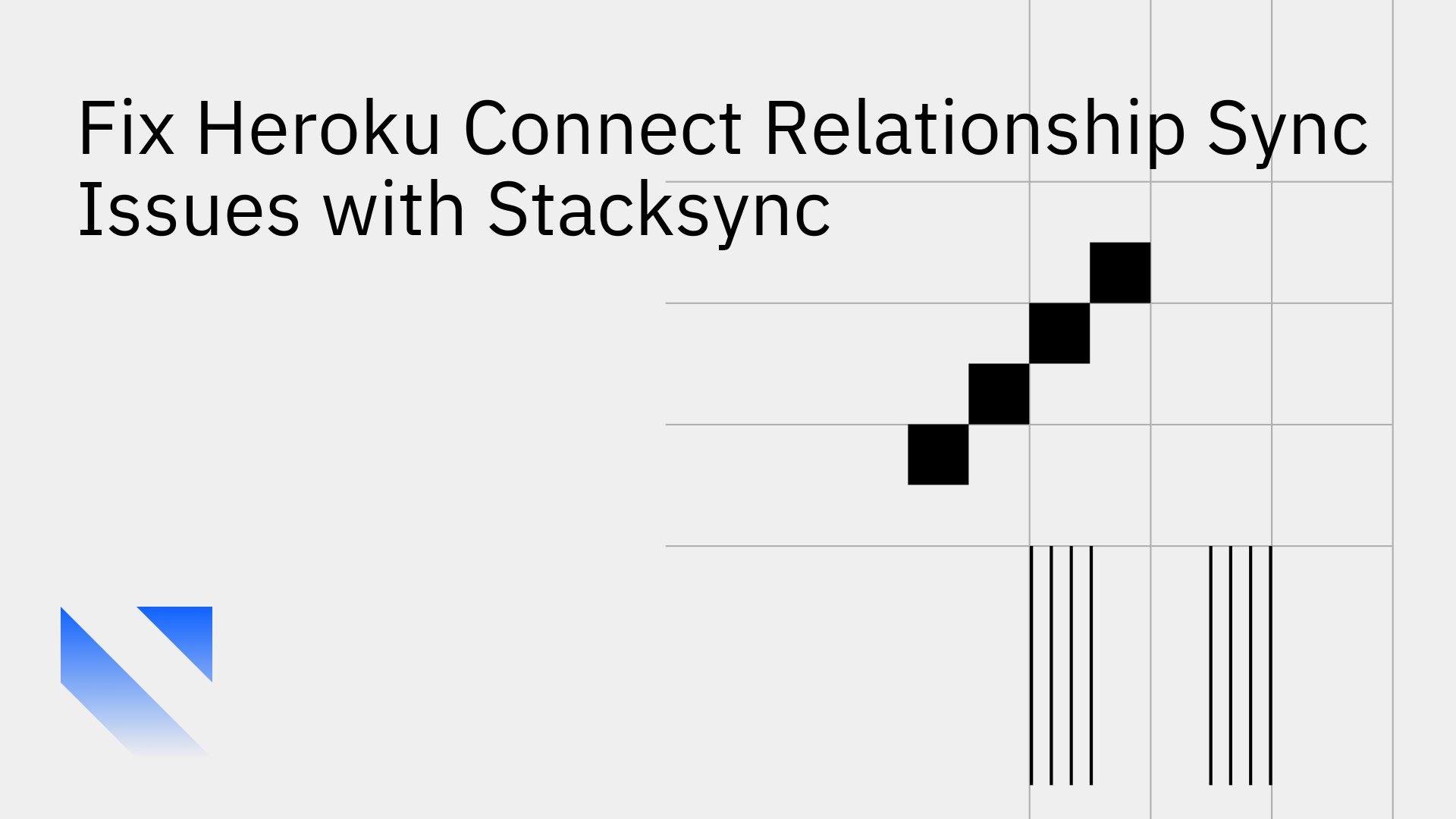
For many development teams, keeping data flowing smoothly between Salesforce and a Heroku Postgres database is crucial for building powerful applications. However, this process can quickly become a major headache due to Heroku Connect relationship sync issues.
When you're dealing with connected data (like an account and its contacts), these sync problems can lead to incorrect information, broken app features, and hours of frustrating troubleshooting.
This article will walk you through the most common relationship sync problems users face with Heroku Connect and show you how Stacksync offers a modern, reliable solution to fix them for good.
Heroku Connect is a handy tool for syncing Salesforce data to a Postgres database, but it often has trouble with the complex way Salesforce structures its data [7]. This is especially true for object relationships, where sync failures can become a constant source of trouble for developers.
One of the most common pain points is keeping parent-child relationships (like Salesforce's Lookup and Master-Detail fields) in sync. Heroku Connect's method for handling these connections can be fragile [4]. Teams often find that related records sync with delays, leading to two major issues in the Postgres database:
A significant and well-known weakness of Heroku Connect is that it often fails to sync updates from formula fields and roll-up summary fields [8]. Salesforce calculates these fields on the fly, so when a related record changes, it doesn't always trigger a standard "update" notification for the parent record. As a result, Heroku Connect doesn't see a change to sync, leaving your Postgres database with outdated and incorrect information.
If you've used Heroku Connect, you've likely run into confusing errors and processes that get stuck and require manual fixing. Some of the most frequent problems include:
InvalidDatabaseException or DatabaseValidationFailed errors, which often means essential system tables are missing from your database schema [6].Trying to solve these issues means digging through technical documentation and spending valuable development time on maintenance instead of building new features [5].
To understand why these problems happen so often, we need to look at the "why"—the core architectural limits of Heroku Connect. These limitations are exactly why so many teams start searching for a better Heroku Connect alternative designed for modern data needs.
Heroku Connect works by "polling," which means it checks Salesforce for changes on a set schedule, often every ten minutes. This creates a built-in delay between when data changes in Salesforce and when it appears in your database. For applications that need up-to-the-minute data, this lag is a dealbreaker. It also increases the risk of sync conflicts, especially with related records that need to be updated in a specific order.
When a sync fails in Heroku Connect, figuring out why can be a real challenge. Error messages are often vague, and there isn't a central dashboard to see and manage problems easily [1]. This forces developers to spend time digging through logs just to diagnose an issue. When you look at Stacksync vs Workato and Heroku Connect alternatives, the difference in how easily you can manage and fix issues is night and day.
Stacksync is a modern data integration platform built for developers. It's designed to solve the exact relationship sync issues that cause so much trouble in Heroku Connect. For teams that need reliable, scalable, and real-time sync between Salesforce and Postgres, Stacksync is the clear solution. A direct Heroku Connect vs Stacksync comparison highlights just how different the two approaches are.
Instead of checking for changes on a schedule, Stacksync uses a real-time, event-driven approach. It listens for changes in Salesforce the moment they happen and instantly syncs them to your database. This ensures that related records are synced in the correct order and without any lag, keeping your data perfectly consistent. This real-time power is built into our Postgres Heroku two-way sync connector.
Stacksync gives you the visibility and control that Heroku Connect is missing. With our platform, you get:
Stacksync is engineered to handle even the most complex data models, including custom objects, intricate relationships, and massive amounts of data, without slowing down. It supports true two-way synchronization, meaning data stays consistent whether it's changed in Salesforce or your Postgres database. This makes Stacksync the perfect tool to replace Heroku Connect with an affordable, real-time sync that scales.
Don't let Heroku Connect relationship sync issues slow down your development and compromise your data. Stacksync provides a superior, reliable, and developer-friendly solution for syncing Salesforce and Heroku Postgres. By switching to Stacksync's real-time platform, you can eliminate sync errors, guarantee data consistency, and free up your engineering team to focus on building great applications.
Ready to experience a seamless sync? Book a demo with our cloud architects or start your 14-day free trial today.